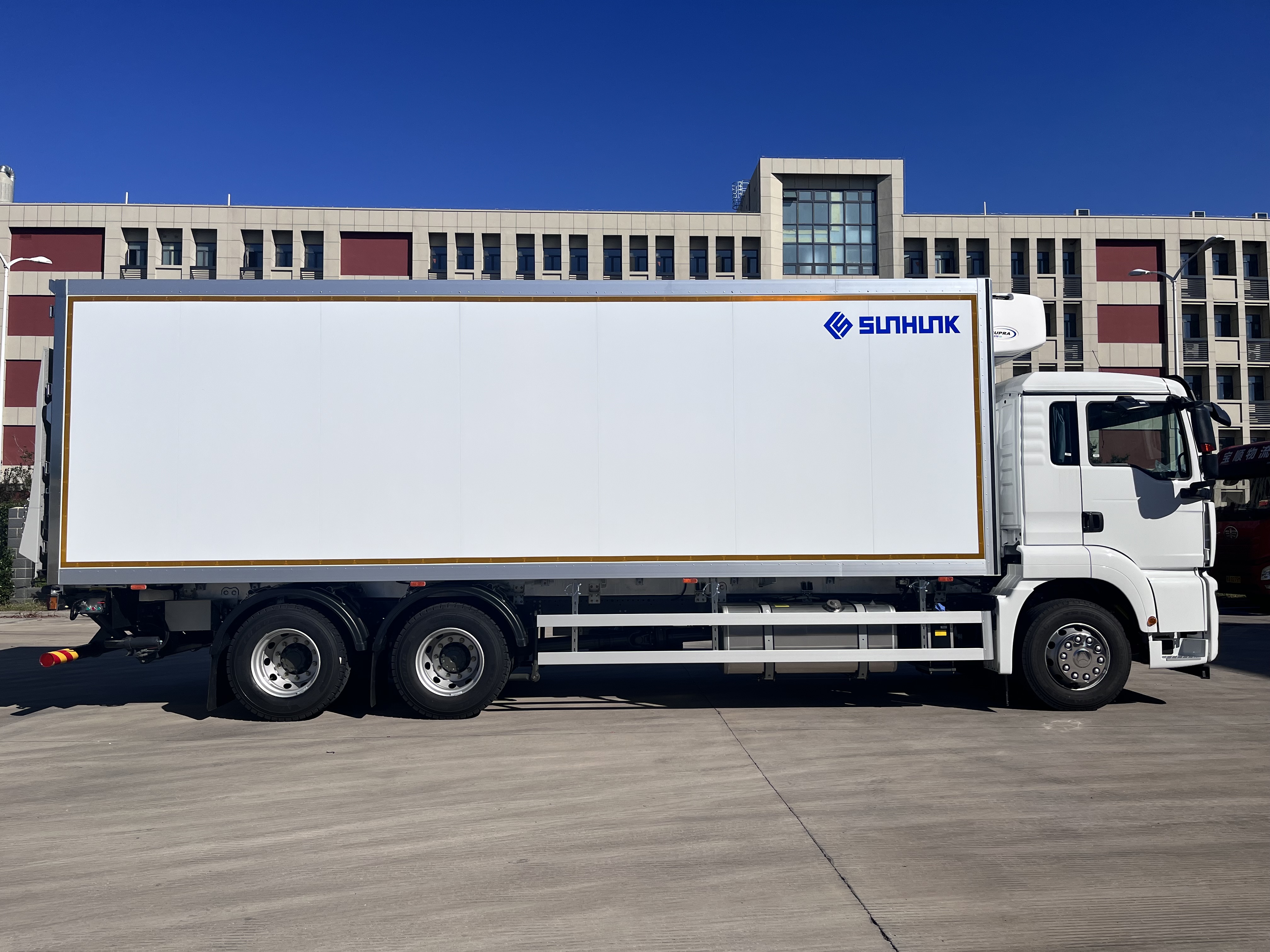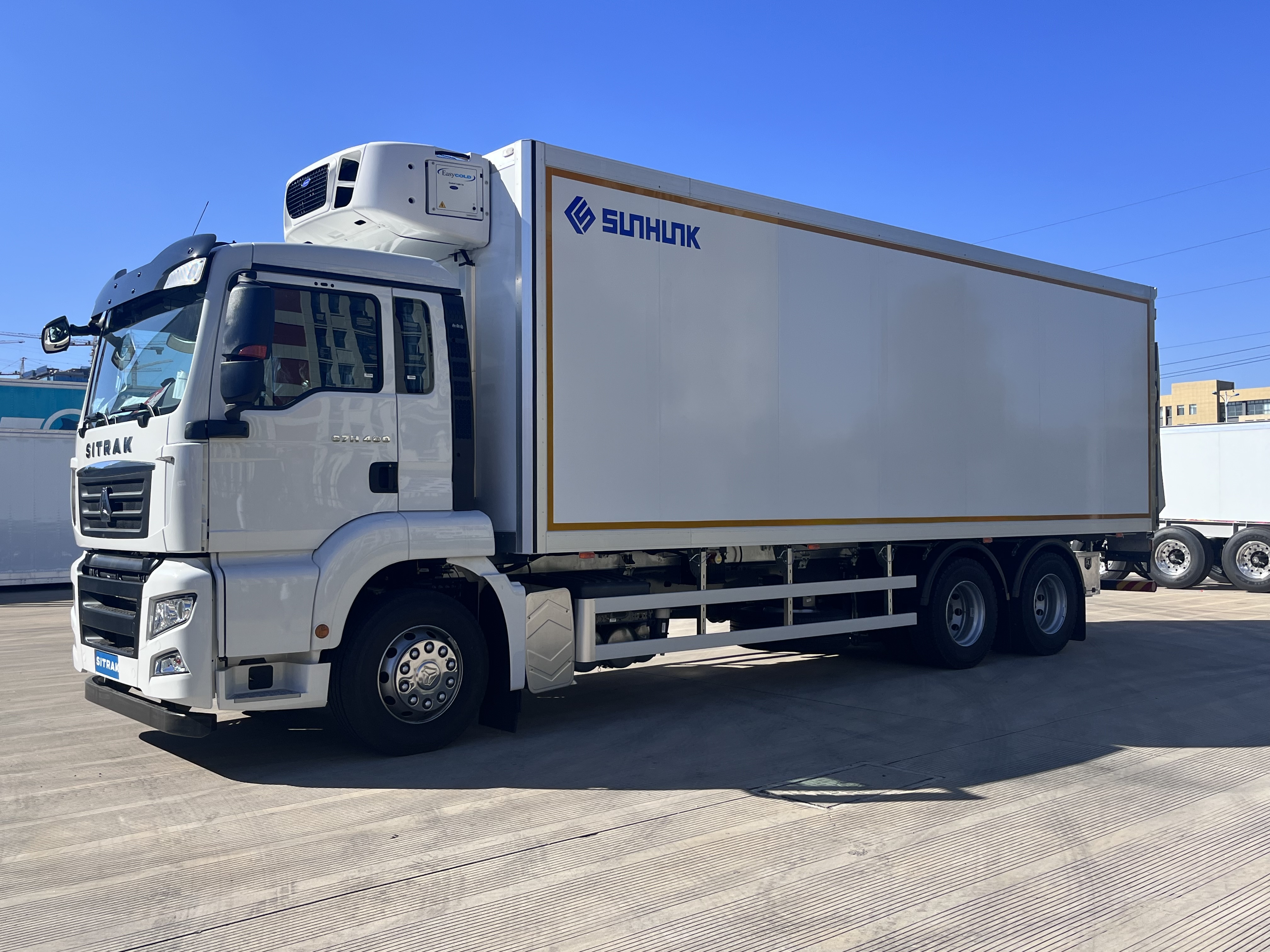- PRODUCTS
- SOLUTION
- SERVICE
- NEWS
- ABOUT US
Cold chain transportation drugs all need to be stored in an environment between 2°C-8 °C, the demand for temperature precision is high, and the fluctuation of ±1 ℃ should not exceed. The frozen food industry has an even higher requirement especially for seafood at below -18℃ temperature if because more than this value will make each hour edible loss rate as high as 2%-3%.
The best condition in the transport of fresh vegetables should be maintained at a temperature between 0℃ — 4℃ with no more than ±2 °C. Otherwise, it can increase loss of moisture up to 20–30%, which affects shelf-life considerably.
Daily fresh dairy temperature requirements to be more lenient, but the same kind of transport frequency is very high. In daily practice, the door of a refrigerated truck can be opened more than 50 times and each opening increases by about 3 °C for a vehicle with no rapid cooling function equipped on it. In order to respond to this timewise, these companies have opted in such cases for refrigerator vehicles installed with rapid cooling functions so that after every opening-closing action of doors, finish restoration within minutes, at least ensure less damage done onto milk-beverages domestically sold.

Direct refrigeration truck: Refers to the installation of direct-coupled electric refrigerator directly in the cargo compartment, usually suitable for long-term preservation and transportation at low temperature. A refrigeration unit installed in the trailer compartment is able to maintain temperatures of -18-25°C, which makes these trucks ideal for long-haul supply routes. Compared with only FOD, the RMB 200,000 to 300,000 market price of a medium-sized direct refrigeration truck has high cost performance advantages due to decreased petrol and increased cargo capacities compared to artificial refrigeration.
On its turn, indirect refrigeration trucks work with airflow through its body to control the temperature. Ideal for freight with limited temperature flip rates, such as fruits and vegetables. Indirect refrigeration trucks are capable of controlling the compartments at a temperature range from 0°C to 10°C, with a controlled about ±2°C difference which is good enough for fresh fruits and vegetables. They have a weaker refrigeration effect than direct refrigeration trucks, but the price is slightly lower – usually between RMB 150k and 250k.
Refrigerated trucks with multiple temperature zones often contain associated cargo compartments that are split into 2 or additional zones facilitated by the method of doors everywhere. One among those for every zone you need. It means that, for instance, the front section can be cooled to -18°C and the rear compartment kept at 5°C – an arrangement well-suited to businesses transporting items with different keeping qualities all on board together. Then multi-temperature zone refrigerated trucks, which have a slightly higher price of about RMB 350,000~500,000.
Another refrigeration method is the dry ice freezer truck, which uses dry ice as a freezing agent and is often adopted to transport goods with high-cold value requirements such as special drugs or experimental samples with strict temperature requirements during transportation. The temperature of these units can be adjusted as low as -78°C to meet the need for extremely low temperatures. The cost of operating the dry ice refrigerated truck is also higher, and its transportation costs per kilometer are 2 to 3 times that of a normal refrigerated truck.
The refrigeration power is the most basic, which can directly affect whether the cold warehouse time reaches the low temperature required quickly or not. For transportation of frozen food, the best choice is equipment with a refrigeration power over 5KW (required by most professional loads) that must be equipped to allow the box to quickly cool down to less than -18°C also in warm season time. Without enough power, foods can spend longer in cooling, which cuts into their freshness.
Uniformity of temperature is very important. If the temperature difference is too big, it may cause some goods to never be cooled properly, which will result in a large reduction in their shelf lives. The best refrigerated trucks can keep the temperature difference to within ±1°C, so that all items are stored in their proper surroundings.
Rapid cooling in the event of overheating is crucial. If the refrigerated truck lacks rapid cooling capability, this could negatively affect product quality over time – particularly in high-frequency distribution situations. Refrigerated trucks with the newest technology to warm up in 5 minutes and it should recover its temperature as possibly within that time frame so your goods stay safe.
Note Load bank reliability and the refrigeration system as well. A high-performance refrigeration system should operate stably at relatively low temperatures (as an efficient diesel engine) and maintain the best efficiency under extremely hot conditions to keep its operation of running for long cycles or stop failures.
The body and frame of the refrigerated truck contain a heavier load at lower temperatures. Other than that, you need to put consideration towards the frame of the new truck. Steel framework — The steel frames are typically used in markets as this kind is strong and lasts more than 10 decades.
Refrigeration system (such as imported Thermo King) can live for 8-10 years, and in this process its cooling efficiency can maintain the original level. While some brands may have lower upfront costs, their cooling performance often degrades 3-to-5-years post-install.
The performance and service life of the refrigerated truck depend on its insulation layer, and an important indicator is the thickness or material. Foamed in polyurethane-insulation is the current leading choice (<100mm insulation thickness effectively reduces cool loss), which adds value to your refrigeration equipment of 15 years or longer.
The electrical systems needed to control their temperature, display the current state of charge, and monitor for faults are essential components that allow any EV or Hybrid vehicle to run in a safe, reliable manner. When purchasing, try to select electrical equipment that has passed -40°C low-temperature tests.
Similarly, the brand and after-sales service are important too. The fact is that a well-entrenched after-sales network makes it easier to replace parts and rectify if anything goes wrong — all the time remaining available. 5-year or larger warranties can be found with some brands.
The use of fuel is the first information about operating costs because, with refrigerated trucks, wyes. Standard refrigerated trucks such as these allow for consumption between 15 and 20 liters of fuel per hundred km. The fuel consumption of new energy-saving refrigerated trucks is 10 to12 liters per 100 kilometers, much lower; if the annual travel distance reaches tens of thousands or even hundreds of thousands km (2000km/month for example), converting from an old one you can save dozens or hundred thousand yuan every year based on current oil price.

When choosing refrigerated trucks, many people will ignore an important part of the maintenance costs. That wheelchair alone costs over 40,000 yuan; the biggest cost is of course the refrigeration system and imported brands such as Thermo King or Carrier require a maintenance fee that ranges from RMB 2-3 thousand each time. Repair costs can run into tens of thousands if it fails.Despite the initial lower costs, domestic refrigeration systems have a higher failure rate and maintenance costs rise 30% to 50%. Combat skill upgrade in 5 to 7 years, the cargo hold insulation material may be replaced by thousands to tens of millions.
Another major expense relates to tire and brake system maintenance. Cost 4000~8000 yuan, that is to say, tires have to be replaced every 100,000~150,000 km. The total expenses incurred on the annual check of the brake system will cost us more than ten thousand yuan.
the annual insurance cost for a medium-sized refrigerated truck is usually between 15k and 20k yuan. Because refrigerated trucks are used for the transport of high-value goods, insurance companies may suggest additional cargo insurance is necessary and this can increase costs.
A hidden operating cost is the electricity consumption of the refrigeration system. Diesel-Electric or Only Electric: While most refrigerated transports work on diesel, some use electric motors. Electric powered Systems are the most environment-friendly in terms of air pollution, but they still have high demand on energy (around 3–5 kWh per hour). As for the electric charge, operating 10h/day can consume several hundred yuan. By comparison, diesel systems may look you back more in terms of fuel consumption but might not have the same long-term cost.
Vehicle depreciation is another Operating Cost. Compared to other regular trucks, refrigerated trucks have a higher rate of depreciation. The lifetime of a refrigerated truck is usually between 8–10 years, and the annual average rate of depreciation falls at around 10% to the tune of fifteen percent. Pick brands (or individual models) with better resale values if you can afford it.